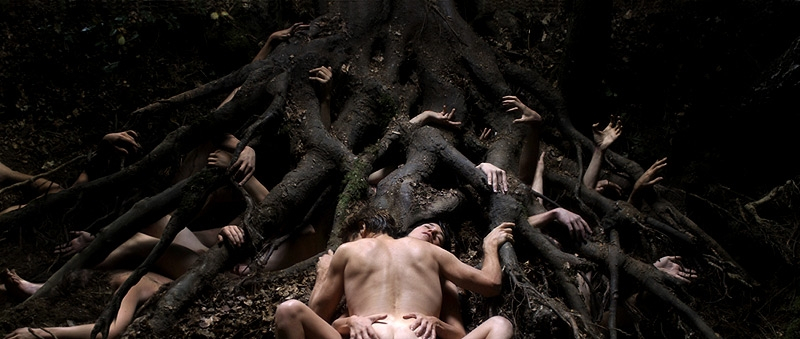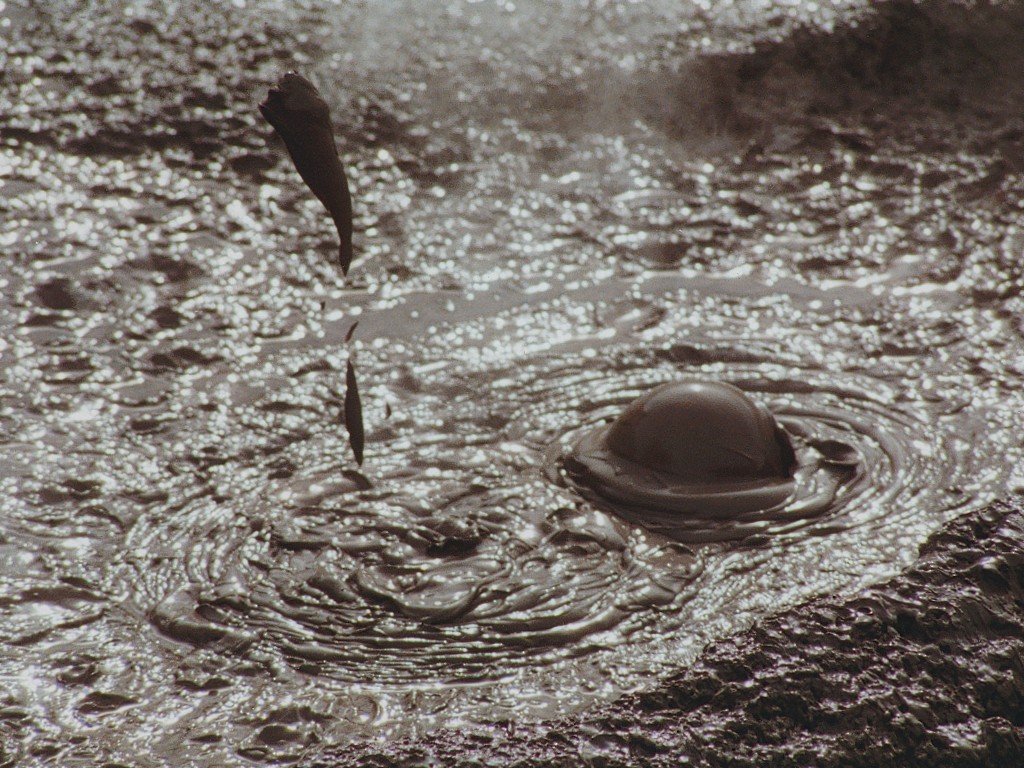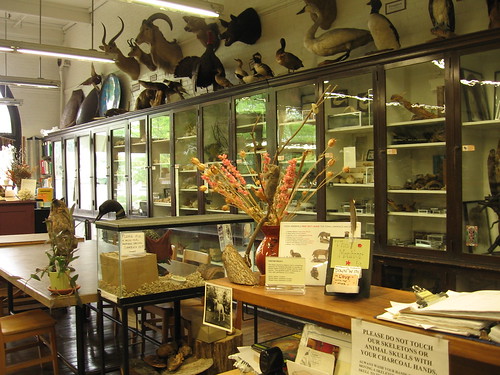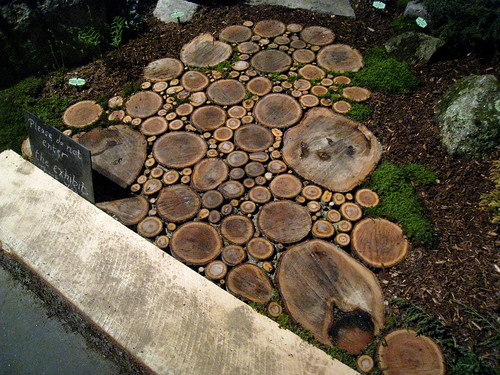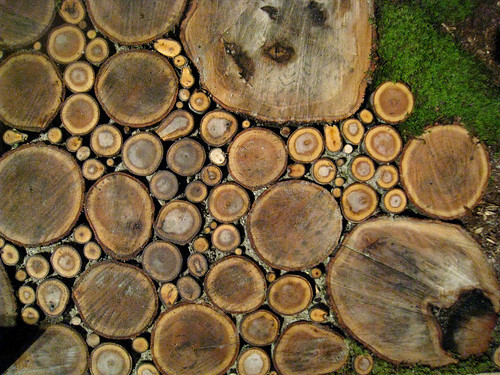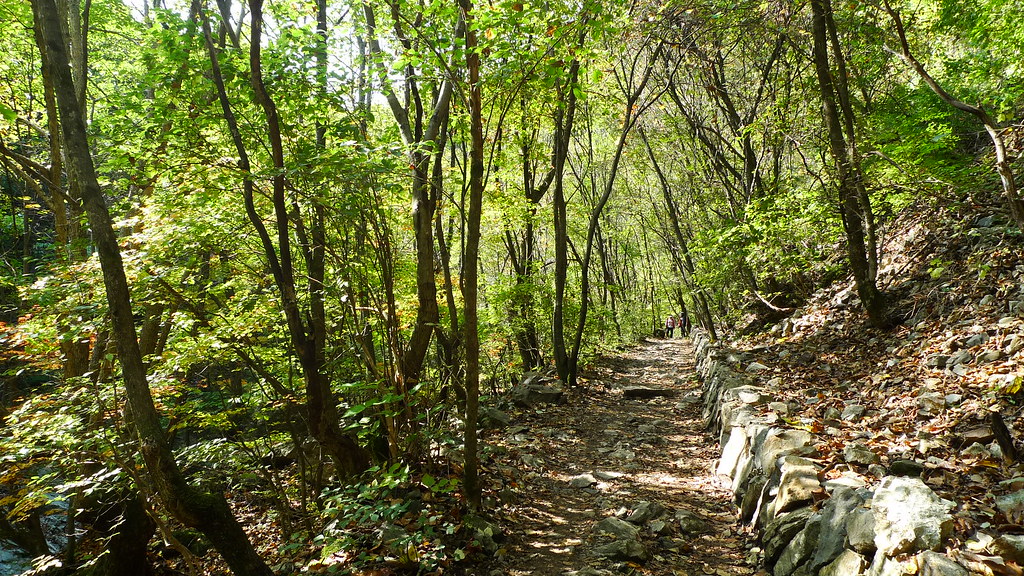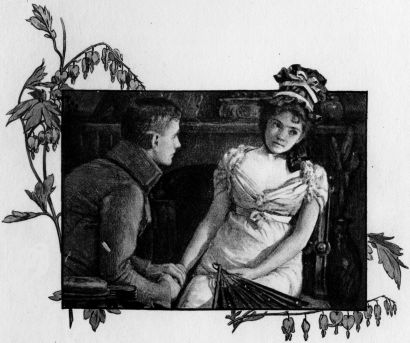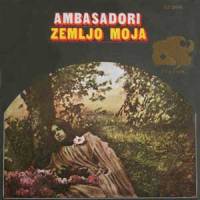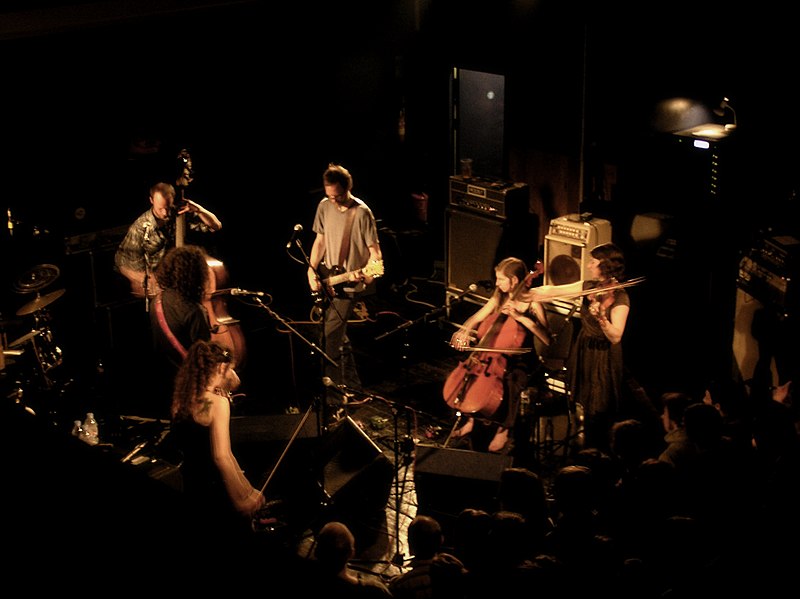10.30.2009
10.28.2009
Martina Galvin

Sky and Earth
Seven mirrors reflecting the sky in the surface of the earth. 4ft x 52ft.
"My impression of the landscape is one of a teeming and active earth: dragonflies, butterflies, grasses and flowers moving and swaying, an undergrowth of constant movement and change. We look down all the time, watching and observing. There in Lough Boora Parklands I observed how big the skies seemed when I stopped looking down and looked up. The skies move constantly too, and rapidly".
"I wanted to capture the vast expansive and fleeting skies, if only temporarily, in the surface of the earth. Its like cutting into the bog to reveal the sky above. It reminds me of the cut black bog pools you see in the bog landscape. Then, when you peer over the edge of the mirrors, it is like looking into a reflective pool. The space between the earth and sky is diminished. Our micro and macro worlds converge in the moment of the reflection".
10.22.2009
Eugene Smith

W. Eugene Smith, Marine Demolition Team Blasting Out a Cave on Hill 382, Iwo Jima, March 1945
Source: http://fansinaflashbulb.wordpress.com/
Paradise

Jan Brueghel the Younger (c. 1620). Oil on oak. Gemäldegalerie, Berlin, Germany
Paradise is no people.

Princes of the House of Timur (c. 1550-55)
10.20.2009
10.19.2009
Walknut (Russia)
Graveforests And Their Shadows (2007)
Motherland Ostenvegr
Once of Northern blood
Death and tragedy
Everything in you
Ghosts and mystery
Under the grey banners of skies
Where falcons sing their pride
What haunts your iron dreams
Motherland Ostenvegr?
Endless fields
Mists and horrid woods
Barrows by the riverbanks
And autumn wind above
Long forgotten songs
Human bones in the dirt
Helmets and swords in rust
The smell of graves and autumn soil
Mighty olden oaks
Always speak to me
With their grim voices of the dead
With their neverfading memories
Once of Northern blood
Death and tragedy
Everything in you
Ghosts and mystery
10.18.2009
Peste Noire (France)
.jpg)
Amazing album. La Sanie des siècles - Panégyrique de la dégénérescence. 2006.
"RAWSTHETIC"
"1° Pure filth. 2° The love of that filth, expressed in beauty, in musical flavour, in refinement."
Interview (Englsih)
1. The black metal of Peste Noire is a bewildering sort, full of so many contrasts: rawly recorded, yet played with an extreme level of technical finesse and, especially, emotion; filthy and ugly and intimidating in that (textural) rawness, yet shot through with a certain beauty or least melancholy within those textures; staunchly (BM)traditional on the surface, yet so defiant of the artform's norms beneath that surface; grim and hateful, yet communicating infinitely more in less tangible words/manners. So, are you aware of these contrasts, and are they something you've consciously explored and developed from the beginning?
An excerpt from the interview featured in the album's booklet reads: " Searching for a divine ray of light in a cesspool, under faeces and refuses, such is PESTE NOIRE's musical mission. " To the Sublime by way of the Putrid, to the Spiritual by way of the Squalid ", such is the band's motto. As a kid, I was only fascinated by punks and Jehovah's Witnesses. Today, PN is still a straddle between scatology and eschatology. " Only in filth can I find beauty and luminosity. For us, perfection, the Absolute Truth and the highest elevation, id est God, are only accessible through Evil — I wish to make it clear that we like filth AS filth, we like sin IN REGARD OF morals: we are conscious of Good but we only like to rape it. That rape is divine. We are immoral, not amoral — spiritual men, not animals. PN's filth can be equated to human torture, that is refined. That is why one can feel PN is simultaneously grubby and classy. 1° Pure filth. 2° The love of that filth, expressed in beauty, in musical flavour, in refinement. As far as the traditional/non-traditional contrast is concerned, I would say Beauty, Grandeur, Nobleness emanate when PN evoke the European PAST (which explains that melancholy, which is nostalgia) with a Black Metal in accordance with our forefathers's tradition (BURZUM, MÜTIILATION, VLAD TEPES). Hatred, terror, DISORDER, madness break out when we conjure up the CURRENT democratic world. Naturally that disorder is expressed in forms which are less conventional.
2. What, then, would be your conception of "black metal"? Like, what does it mean to you?
Black Metal is the musical memory of our bloodthirsty ancestors of blood, it is the marriage of Tradition, of old racial patrimony with fanaticism, with the rage and the rashness of a youth now lost. It is a CHTONIAN religion: a cult of the EARTH and a return to it, therefore a nationalism; a cult of what is BELOW the earth: Hell — the adjective "chtonian " applies to the Infernal gods as well. BM is a fundamentalism, a music with integrity (from latin integer, complete) which helps me to remain complete in a dying world, amidst a people in decay, unworthy of its blood. It is the apology of the dark european past. It is a psychosis which helps us to flee a reality we cannot tolerate anymore.
3. Is Peste Noire your ideal form of BM, or is PN simply an extension of your inner self?
Our ideal form of BM ? We try... I have a precise IDEA of what PN MUST be as regards its sound, its universe and its instrumentation. We would wish to add violin, bombard and accordion but we have not reached this point yet. PN is still a project. It is indeed an extension of my inner self but not only. Above all else, PN is an extension of the Devil, its representation BY me. BECAUSE Satan enters into me, or BECAUSE He touches me from the outside, because in both cases I am brimful of Him. I feel the need to exteriorize my possession or my love for Him (I conceive the Devil in different ways: He is a lanscape, an era, an instant, a dream, a pulsion...). But the love, the emotion for Him — which are REACTIONS — are fully mine in PN. The rest is His direct language filtered by my aptitudes and the technical means at my disposal. Inversely, when the emptiness of my life makes me suffer I summon the Devil through my music, to bring Him back, to be reminded of Him, with nostalgia. Satan is the cause of my music, I am His means (He is also mine), my listeners a goal to reach, an audience to convert. Thus, PN is as much possessed and inspired as individual and subjective. Not only is my role to stand for something (the Devil, France d'Oïl (Northern mediaeval France), the Past, my environment etc.) but it is also to stand for myself (actual experience, personal emotions).
4. Thus, what can you reveal about your personal life and how it relates to Peste Noire's music?
I come from the North of France but I grew up with the hatred of a region of latin culture, the extreme South-West of France where I was born by mistake. As far as my life is concerned, I am a deserter, living as far away as I can from the " world ". Calm hermit in libraries or in the psychiatric hospital I was brought to in 2005, loud hooligan in the streets. Shunning or beating one's fellow human being, it is always severing contact. That is why my music is distant. It sings of the Elsewhere (the North or Darkness), of the Other and of the Old. It is the symphony of the aged, of the homeless, of the Barbarian, of the sick, of demons, of the lunatics, the symphony of those who are far, far away from here. I was born in the wrong place at the wrong time and I do everything I can to escape.
5. To that end, *should* one's music be a direct reflection of one's personality and inner self? or, can a certain "mask" or artifice - a *facade*, even - in musical/lyrical form still be potent art?
Music is always the reflection of one's inner self as it expresses a particular taste or personal feelings. But BM is ALSO a mask, it goes without saying... Why do most of the bands use corpsepaint ? I AM MY PSEUDONYM, out of spite for my social being. La sale Famine de Valfunde is less a person than a character. Through PN I created an IDEAL and LESS FRAGILE Ego. 1° IDEAL because I AESTHETIZE the being I am and I do not expose it as a whole or in its bare truth. In a way I CHOSE myself (if not my music and my lyrics would be as gross and ugly as the reality I loathe). 2° A LESS FRAGILE Ego because thanks to PN I break free from my little and ephemeral body to become incarnate somewhere else, LONGER and MORE GREATLY; in a record, in a piece of paper, in a photo, prepared, studied and selected as were Mussolini's — For instance he was always very careful to conceal his baldness. However the transference from my person to my character has become permanent and irreversible. As the saying goes, I " sold my soul to the devil " to become powerful, a statue, a monument... Art is by definition a RE-presentation, a NEW made-up presentation of oneself. Only through PN can I conceive a noble existence.
6. All that said, is one goal of Peste Noire's to have the music reflect back upon the listener - meaning, seeing/hearing themselves within the contrasts you present? or, ultimately, is Peste Noire entirely selfish and for yourself only?
"Art's external aim is not the work created but the work received by the world " (Bernhild Boie). We are little toads who sing they are Kings. And if we sing, it is because we want to get heard. We want to stir our soul brothers — only them — to the point when they acknowledge us as elects, as messengers from the Netherworld, as angels (from greek aggelos, messenger).
7. From the beginning, you've kept Peste Noire a fairly clandestine affair, but are at last finally granting a few interviews. Is some degree of secrecy necessary to give the music the proper mystique and, more so, allow it to communicate on broader, myriad levels? Or, is sometimes dictating to listeners/readers that "This is this and that is that" necessary to keep things defined and not allow motivations/intentions to be confused or distorted?
First and foremost, PN is stimulation of the flesh, passion, pathos. It is music and wordless mysticism. Beyond that, it is also a SECT which communicates an ideology, a rational Word, giving a new meaning, a direction to our unknown Brethrens. Still, we do not speak a lot and with everybody. I have decided to speak once and in depth to the suitable audience. LA MESNIE HERLEQUIN, the literary review I created with L'atrabilaire Maldoror (who translated this interview into English) will allow me to do so. However, it cannot be denied total secrecy in order to keep the appropriate mystique is often a ruse used by non-mystical bands that want to appear mystical. Such bands have nothing to say and they feign mystery. To come back to question 5, there is a good and a wrong " mask ". 1° Real possession, transference, the Id which manages to become real (mechanics of psychosis), transference which becomes real in the work of art. 2° Charlatanism which consists in pretending one owns a secret, that one is someone else, without believing it oneself. That is the case for some 90 % of BM bands. The cause for my BM: becoming MY desire, being my desire. The cause for theirs: being YOUR desire, pretending.
8. Speaking of which, Peste Noire was once construed as NS, mostly down to the 'Aryan Supremacy' and 'Macabre Transcendence' demos...care to clear this up? Are you in fact anti-NS, or are some NS tenets plausible?
I am a nationalist, not a socialist... My two nations are : France d'Oïl and Hell. BM is a double nationalism, temporal and spiritual, horizontal and vertical. 1° TEMPORAL as it is always the heritage of a BLOOD and of a material EARTH it has to worship. 2° SPIRITUAL (vertical) in that it is metaphorically a nationalism from Hell and from Darkness, an ethical and aesthetic allegiance to the Kingdom Of Evil. Of course I share (I say " I " because it is not necessarily the case for the other members) some principles of National-socialism but I reject some too. To my mind, without being necessarily NS, real BM is always extreme right-wing music — be it from Asia or Latin America as extreme-right politics are not the appanage of the white race — and it is always Satanic.
9. Another thing I've often wondered and am imploring your 'definition' of - what's the meaning behind the logo? I absolutely love it, but find a certain degree of twisted humor behind it, too...
The death's-head is smiling. So, in spite of all, it lives. We are walking corpses, I have written it in the introduction to the interview featured in the album. But its smile is cynical, malicious and sardonic. It expresses an aristocratic sneer, haughty towards mankind, and an amused disgust. The death's-head is as we say it " une tête brûlée " (French expression, literally " a burnt head " translated as " daredevil " in English). It is one-eyed to show the blindness of our fanaticism.
10. And if I'm to ask for yet more clearly defined terms, what are the lyrical subjects on 'La Sanie des siecles - Panegyrique de la degenerescence'? I'm guessing there's an overall theme or themes, yes?
A parallel between mediaeval and modern apocalypse; the decline of the current world and the desire to see it die out since it cannot be saved; vengeance and the fantasized return of our Own (our Own: a fallen nobility humiliated socially, psychically and physiologically) are the leading themes of the album. Annihilating the world which has annihilated us. It invites people to do so.
11. With this album, it appears (and sounds) like Peste Noire is a full 'band' now whereas, obviously, you were solo before. Is this (perceived) collaboration invigorating, as far as getting new input into the PN sound? Or can it be frustrating in that it's not solely a extension/representation of yourself anymore, but of a few additional members?
I keep control of the composition, i.e guitar riffs which are the leading soul. Winterhalter (drums) and Indria (bass) set these riffs in motion, propel them, enrich them and build over them giving them the most perfect colour. They refine and expand PN. If I had to lose these two individuals, PN would not disappear but would get much poorer given the absence of similar musicians in BM. The same applies to Neige who will compose some titles — his musical sensitiveness is very close to mine. Therefore, the two new members — Neige has always been a member, except in 2005 — gave a great energy to PN, which has now become an undefeatable commando. The only things I will never share are the concept and the surrounding universe (musical, aesthetic and textual), which have grown and matured in my brain only. That is why I am the one who answers to your interview. I am the Word and the Miry Spirit of PN. They are PN's body and armour. Far from being frustrated, I am stronger and better armed.
10.17.2009
Birch polypores


& Tinder fungus (Fomes fomentarius) growing on a dead silver birch trunk.
Source: http://www.treesforlife.org.uk/tfl.birch.html
Chateau de Robernier

Chateau de Robernier, Provence, FR
"The chateau's party room. The ceiling has been covered in swags of champagne-colored satin. The room once was the press room, where the chateau's grapes would be brought when they were ready for squeezing."
Source: http://www.nytimes.com/slideshow/2009/10/13/greathomesanddestinations/1013-sfrance_index.html
Quarry garden

Vermont Marble Company # 5,
Abandoned Marble Quarry, Rochester, Vermont, 1991

Marble Quarries # 001,
Rultand, Vermont, 1991
Edward Burtynsky.
Fantastic scene. Wrong photography.
10.12.2009
Joel Meyerowitz

Dune grass, House, Truro, 1984
Source: http://www.jacksonfineart.com/Joel-Meyerowitz-2519.html
Marine Hugonnier


Towards tomorrow (International date line, AK), 2001
"TOWARDS TOMORROW is the result of a trip to the Bering Strait in Alaska, USA, to photograph across the International Date Line into Siberia. Due to its geographical position, Siberia is always 24 hours ahead of Alaska. The photographs are therefore, in effect, pictures of a future moment."
Source: http://www.marinehugonnier.com
Animal wall


Gitta Gschwendtner (UK)
Large scale public art installation providing 1000 bird and bat boxes in Cardiff.
10.09.2009
10.06.2009
Nicolas Henri Jacob

Surfaces of the tongue, shown in isolation, in 10 numbered illustrations. Papillae shown under a microscope. 1831-1854

Brain and spinal cord, shown in situ. Skull divided in coronal section to show intact brain. Spine divided to show spinal cord and cauda equina. Dura mater shown intact on right side of brain and spinal cord, dura mater removed from left side. Cranial sinuses and spinal nerves shown. Ribs and pelvic bones also shown intact with intercostal muscles and psoas muscles. Posterior view. 1831-1854
Jacob, Nicolas Henri (1781-1871)
Source:http://link.library.utoronto.ca/anatomia/application/index.cfm
Faustino Anderloni

Muscles and arteries of the neck, shoulder and arm. 1813. Engraving/etching
Faustino Anderloni (1766-1847)
Source: http://link.library.utoronto.ca/anatomia/application/index.cfm
Joseph Maclise
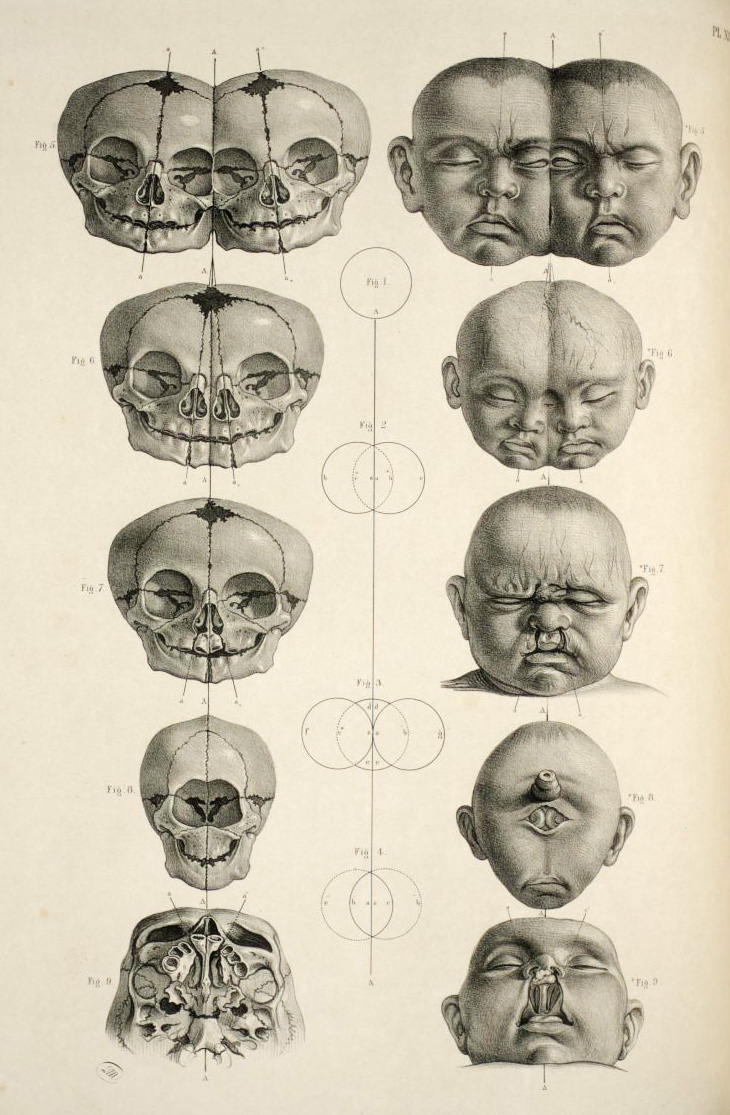
"Head and skull of malformed infants; conjoined twins, bilateral cleft lip and holoprosencephaly," from Joseph Maclise's book Surgical Anatomy, published in London in 1856.
Source: http://www.gutenberg.org/etext/24440
Wild Law, Dark Ecology, Silent Animals
by Tom Bailey
In medieval European literature, it is a theme in commentaries on the Apocalypse that, before the day of God’s judgement, animals, plants and stones are all endowed a voice, through which they cry out to God. One poem, the anonymous “Quindecim Signa ante diem Judicii” (‘The Fifteen Signs Before the Day of Judgement’), describes a scene in which all creation laments the sins of man:
“The same day, a wondyr it is,
As the prophecy tellyth it truly:
That all thynge shall speke then,
And cry in the earthe aftyr the stain of man,
And bemoan themselves of our sins
Right as they may speke.”[1] [Spelling partially modernised]
Likewise, in similar commentaries all manner of inanimate objects from the vegetable and mineral kingdoms rise and do battle with one another, before lamenting the sins of man in a language that only God can comprehend. Whether or not man can understand this language, it is unspecified.
Whether we agree with the severity of their tones or not, a legion of climate scientists and journalists has been warning us that we are on the cusp of a similar apocalypse. Indeed, different kind of judgement has also been called for, that of Wild Law, the concept of a South African lawyer, Cormac Cullinan. He provides an interesting critique of a grossly anthropocentric legal system, in which the interests and fictional ‘rights’ of humans dominate above all other concerns. Since other species are outlawed by this system, when the opposition between land development and ecosystem preservation comes about, the former inevitably wins. Cullinan proposes a framework of Earth Jurisprudence, whereby the members of what he calls the “Earth Community” must be granted similar rights as humans in legal cases. Working under the aegis of ‘Gaia’ theory, scientific holism and the interdependence of all species for the sustenance of life on Earth, Cullinan attempts to assign a right to anything which fulfils its evolutionary function on Earth, and that helps to develop a balance of life within a web of other beings. These other beings, rather than remaining natural objects, become legal subjects. And this is not simply theory: there are legal firms practicing along these lines around the world – for instance, Client Earth, based in London. Despite the importance of Cullinan’s expedient thinking, it is a cruel reminder that, at the point of granting the natural object legal subjectivity, it is we who are speaking for the other species.
Until recent times, Western philosophy has concluded that there is one, insurmountable metaphysical attribute which separates man from the animals: language. This is not simply denying other species the ability to communicate – for all species clearly do – but denying the ability for others to communicate in a means as complex as human language, or communicate in any way that remotely approaches intelligibility or proximity to the human language. It is a remarkable and sometimes unnerving thought to think that humans have evolved on such a path that we do not understand the language of other species; that there is an (as of yet) unbridgeable cognitive gap between us and animals and plants. More to the point, can other species speak amongst themselves? And why is it, perhaps, that evolution is means whereby the signs of another species are only vaguely intelligible, if at all, to another?
Problems arise when a species begins to consider its different quality of communication as a mark of its own superiority, and such has happened with mankind. The ability to speak human language has become synonymous with the ability be conscious, to reflect upon oneself, and to contemplate death. Animals, because they do not speak, are considered to be less reflectively conscious. A concept which epitomises this idea, and which has become an axis for debate and contention within the humanities during the last two decades, is the following tripartite division by philosopher Martin Heidegger:
The human has a world
The animal is poor in the world
The stone has no world
Briefly, Heidegger defines the ‘world’ not as a physical entity such as the earth or a tree, but as a state of poietic, metaphysical revelation of the truth of those objects, earth or tree. And these things reveal their essence through human language. The animal, because it theoretically possesses no language, is only poor in the world – it perceives the existence of objects, but the true essence of these objects is not revealed to them. Needless to say, the conscious-less stone has no world.
Another Modernist philosopher and critic, Walter Benjamin (although opposed to Heidegger’s ideas) demonstrates a similar emphasis on human language being the highest form of communication among all species. His theological arguments are stylistically dazzling as they are enigmatic, and here is not the space to do this writer critical justice. Suffice to say that he grants all things, animate and inanimate, an essence of linguicity, all of which find their essential truth in the human act of naming. One of Benjamin’s most scintillant essays, ‘On Language as Such and the Language of Man’ (1916), provides the following short review of Genesis, naming, and what Benjamin identifies as the muteness of nature:
“The life of man in pure language-mind was blissful. Nature, however, is mute. True, it can be clearly felt in the second chapter of Genesis how this muteness, named by man, itself became bliss, only of lower degree. Friedrich Miller has Adam say to the animals that leave him after he has named them, 'And saw by the nobility with which they leaped away from me that the man had given them a name'.
"After the Fall, however when God’s word curses the ground, the appearance of nature is deeply changed. Now begins its other muteness, which we mean by the deep sadness of nature. It is a metaphysical truth that all nature would begin to lament if it were endowed with language. (Though to ‘endow with language’ is more than to ‘make able to speak’). This proposition has a double meaning. It means, first: she would lament language itself.
"Speechlessness: That is the great sorrow of nature (and for the sake of her redemption the life and language of man – not only, as is supposed, of the poet – are in nature). This proposition means secondly: she would lament. Lament, however, is the most undifferentiated, impotent expression of language; it contains scarcely more than the sensuous breath; and even when there is only a rustling of plants, in it there is always a lament. Because she is mute, nature mourns.”[2]
Benjamin’s poetical criticism and the conviction of his language can make some immediately sceptical to his truth claims. Yet without doubt he best identifies articulates the sadness felt by man amidst a nature that does not respond to language. Perturbed by the lack of a response, the human is reminded of its loneliness, and a melancholy disposition becomes inescapable.
The feeling is often intensified in relation to biodiversity loss in the face of climate change. The Anthropocene Extinction, as it is termed, the sixth great extinction event in the history of the planet, is already under way. If emissions do not undergo immediate and radical cutbacks, then the background rate of species extinction may be one hundred times faster than it already is. Without anywhere near as many species with whom we can share our planet, it will become a far lonelier place.
The loss of species is of course reason enough for grief. Inarticulable grief. In denying other organisms the same superior levels of consciousness as humans, man has made the profound mistake of forgetting his compassion towards the suffering of others. French philosopher Jacques Derrida has gone as far to call the mechanised mass-slaughter of animals for meat and other purposes deserves no other term but genocide:
“No one can seriously deny, or for very long, that men do all they can in order to dissimulate this cruelty or to hide it from themselves, on order to organize on a global scale the forgetting or misunderstanding of this violence that some would compare to the worst cases of genocide…
"the annihilation of certain species is indeed in process, but it is occurring through the organisation and exploitation of artificial, infernal, virtually interminable survival, in conditions that previous generations would have judged monstrous, outside every supposed norm of life proper to animals…”[3]
At the heart of Derrida’s enquiry is a prolonged enquiry into the barbarity with which Western philosophy has approached the concept of ‘the animal’. The conceptualisation of the myriad of species into ‘the animal’ or ‘the animal kingdom’ is exemplary of this stultifying inability of man to empathise with that which does not speak his language. Derrida’s concern is that humans must attempt identify with their own animality, our own animal nakedness, in order to relearn how to live amongst other species. It’s his contention that in the immediate moment of human nakedness before an the gaze of an animal, the true experience of the both limit of the human and a deeper sense of what it is to live with a another entirely separate species emerge:
“As with every bottomless gaze, as with the eyes of the other, the gaze called animal offers to my sight the abyssal limit of the human: the inhuman or the ahuman, the ends of man, that is to say the border-crossing from which vantage man dares to announce himself to himself, thereby calling himself by the name that he believes he gives himself. And in these moments of nakedness, under the gaze of the animal, everything can happen to me, I am like a child ready for the apocalypse…
"When the instant of extreme passion passes, and I find peace again, then I can relax and speak of the beasts of the Apocalypse, visit them in a museum, see them in a painting…”[4]
After the experience, he will speak of animals as conceptual objects (in art, in a museum, etc.) but for that moment of nakedness he began to relearn what it was to be of the human species.
In the above passage Derrida also mentions the “abyssal limit of the human” felt when face to face with an entirely separate species. The mention of ‘abyss’ is important here, because it recalls the vitally important relation between human melancholy and space. The melancholic oscillates between the exposed sadness and agoraphobia of an abyssal and limitless space, and the claustrophobic dread of a living within prison. It is these two paradoxical attitudes towards space that I believe haunt the contemporary human consciousness. On the on hand, the science of the last two centuries has revealed to us that we are living in a limitless expansion of space. The again, as the climate change scenarios and prophecies proliferate throughout the media, we are experiencing a resurgence of the Malthusian argument which underpinned Darwin’s understanding of evolution. As a population expands, it will exhaust its resources, which will lead to keeping this expansion within its natural limits. Malthusianism, at heart, is about reasserting spatial limitation. We are told that 3 planets will be needed to feed nine billion humans, and we recoil at the thought of such unthinkable claustrophobia here on Earth. From another perspective, the excessive urbanisation and technologisation of the planet creates an increasing cognitive distance between man and nature. An inability to connect the trees in the forest or the cows in the field to mass-produced furniture or burgers develops. Humans no longer know what nature is, other than its own empty appearance. According to another modernist philosopher, Theodor Adorno, in such a situation “nature turns into an irresistible allegory of imprisonment.”[5]
Then again, the idea of an abyssal, limitlessness nature has given rise to the dread of the inescapable purposelessness and futility of human action, a wallowing insignificance that the more we think about our relation to vast universe, the more we are as motes of dust in the sunlight. This is a purposelessness to which writers such as Dawkins stoically refer, and which is softened by evoking the wonderful and creative mechanism of evolution that has occurred amid a sea of nothingness. A similar argument can be seen in an article by George Monbiot:
“Like other life forms, we exist only to replicate ourselves. We have become so complex only because that enables us to seize more energy. One day, natural selection will shake us off our planet. Our works will be forgotten. There will be nothing capable of remembering.
"But a curious component of our complexity is that, in common with other complex forms, we have evolved the capacity for suffering. We suffer when the world becomes a less pleasant and fascinating place. We suffer because we perceive the suffering of others. It seems to me that the only higher purpose we could possibly possess is to relieve suffering: our own and that of other people and other animals. This is surely sufficient cause for any project we might attempt. It is sufficient cause for the protection of fine art or rare books. It is sufficient cause for the protection or rare wildlife.”[6]
Amid an apparently meaningless universe, where things are not conscious of any purpose they already fulfil anyway (such as self-preservation), humans, who as a species are burdened with a necessity for purpose, must relieve suffering through an appreciation of aesthetic brilliance. Monbiot’s article is titled ‘Natural Aesthetes’, and in it he addresses some reasons why conservationists and others find it such a difficulty to express the deep importance of biodiversity. He laments the state of conservation when all it can do, in some cases, is to stress the utilitarian value of a species (this frog’s poison might one day provide a cure for cancer). Instead, Monbiot argues for conservation on purely aesthetic grounds:
“The legacy of exclusion makes conservation look harder to justify on the grounds of aesthetics. But it seems to me that this is the only sensible argument that can be made. It is surely sufficient to say that wildlife should be preserved because it is wonderful”[7]
The argument here is resoundingly similar to an influential essay by biologist N.J. Collar, titled ‘Beyond Value: Biodiversity and Freedom of the Mind’, which attempts to confront the problem of how the argument for species preservation must make its case in line with the economic value of that species. Instead, like Monbiot, argues for an inherent link between biodiversity and a mental freedom to wander and to imagine possibilities:
“The diminishment of nature is the diminishment of man. Extinction is the negation of the possible; it creates poverty in the mind. Our capacity to experience, to imagine, to contemplate, erodes with the erosion of nature, and with it we forfeit piecemeal — landscape by landscape, site by site, species by species — the freedom of mind which yet we cherish as ultimately the greatest feature of our human identity.”[8]
There is indeed virtue in this argument, and I believe that Collar is right that in addressing conservation we must begin first of all to reconsider our underlying mental attitude towards the natural world. But within both his and Monbiot’s articles there is nonetheless the saddening sense that notions of ‘wonder’ and ‘poetic mental freedom’ which biodiversity inspires are palliative aesthetics, somewhat decadent and aware of their own futility as an argument for co-existing with another species.
Conservation is indeed a melancholy science – it is burdened with the task of defending the right of a species not to die. Without ever communicating with its defendant or comprehending what it truly feels, it must plead to a jury which is hand in hand with the executioners. Perhaps, as Collar argues, conservation needs to reassert its foundations as to why it is doing what it is doing, to arm itself with a greater and more irrefutable arsenal of arguments that it already has at its disposal.
Another problem with halting ecosystem destruction, I believe, lies with human melancholy itself. In one sense, climate change is a continuation of the Genesis narrative: once the exit from Eden has begun, an already profane Earth becomes more and more profane, the further we attempt to ameliorate it. It seems that we are caught in a cycle from which it will be difficult to escape, where sadness at the Earth’s destruction will compound upon greater sadness as that destruction becomes worse. The mood of the times, as one prominent psychoanalytical theorist claimed at a climate change seminar, is melancholy. Another literary theorist, Tim Morton of the University of California, Davis, has come up with the idea of Dark Ecology: from his point of view we are past the ‘tipping point’ of destruction and already in the midst of the catastrophe of global warming. It does not exist somewhere in the future, it is with us now. The challenge for artists, writers and others is to understand and articulate the grief that this is already happening. Speaking in a seminar in California, he talks of a kind of rite of passage whereby we can come to comprehend the interconnectedness of all species. A realisation of ecosystem destruction, according to Morton, first incites a feeling of guilt, then of shame, then depression, then sadness, then of an inner openness, in which we realise the interconnectedness of beings.[9]
Melancholy is a feeling that can be wallowed in, or it can be overcome – at least, I think this is where Morton is pointing. From a personal view it seems that, in relation to climate change, everyone is mourning in expectation of loss, because sadness in the twenty-first century is such a seductively simple emotion. It is a challenge and an art to think one’s way out of it. Climate change and biodiversity loss are indeed terrible, almost inconceivable things. Sadness at what is happening and guilt for being, even to a minor extent, complicit in the destruction are perhaps instinctive reactions. But following this impulse I suggest that there is a need, amongst those defending the environment, for a certain exculpation and overcoming of bad conscience. In melancholy, as I have touched upon here, lies the perceived disjunction of a species and its environment. If humans dwell too long upon the guilt and mourn what is lost, then the more that the climate changes, the more they will believe that they are walking ever further from Eden over an increasingly unbearable Earth. And such sadness and guilt leads to despair, a stagnant pool whence no good action springs.
[1] Quindecim Signa ante diem Judicii" (ed. in Furnivall, Hymns to the Virgin and Christ EETS OS 23, 118-25.)
[2] Benjamin, W. (trans. E. Jephcott) ‘On Language as Such and the Language of Man’ Reflections (New York: Schocken Books, 1986) p.329-330.
[3] Derrida, J. (Trans D. Wills) ‘The Animal That Therefore I Am (More to Follow)’ Critical Enquiry (Winter 2002) p.394.
[4] Derrida, J. (Trans. D Wills) ‘The Animal That Therefore I Am (More to Follow)’ Critical Enquiry 28 (Winter 2002) p.381.
[5] Adorno, T. ‘Part III: Models. World Spirit and Natural History. Excursus on Hegel’ Negative Dialectics (1966), p.351. Available online at: http://www.marxists.org/reference/archive/adorno/1966/negative-dialectics/ch04.htm
[6] Monbiot, G., ‘Natural Aesthetes’ in Bring on the Apocalypse (London: Guardian Books 2008), p.56.
[7] Monbiot, G., ‘Natural Aesthetes’ in Bring on the Apocalypse (London: Guardian Books 2008), p.55.
[8] Collar, N. J. ‘Beyond Value: Biodiversity and Freedom of the Mind’ in Global Ecology and Biogeography 12, p.269.
[9] Talk available at: http://ecologywithoutnature.blogspot.com/
Source: http://www.conservationtoday.org/index.php?/Editorials/Tom-Bailey/On-Nature-and-Melancholy-The-Silent-Animal.html
William Kentridge
History of the Main Complaint (1996)
History of the Main Complaint is the sixth film in the series and is based on twenty-one drawings. It was made shortly after the establishment in South Africa of the Truth and Reconciliation Commission, headed by Archbishop Desmond Tutu. It was set up to conduct a series of public hearings into abuses of human rights perpetrated during the apartheid era. The hearings, in which individuals told their stories of personal suffering, were held in order to make reparation for abuse and in the hope of creating reconciliation between peoples. The underlying theme of this film is a (self) recognition of white responsibility. This is played out through a 'medical' investigation into the body of Soho Eckstein, the white property-developing magnate and greedy-capitalist protagonist of most of the preceding films, which provides the starting point for a revelation of conscience.
In the beginning of the film Soho lies in a hospital bed in a coma. A Monteverdi madrigal plays on the soundtrack. Clone Sohos appear in pin-stripe suits to examine the recumbent body and penetrate it with stethoscopes. This activates the machinery of Soho's office desk (seen in earlier films) - paper punch, telephone, adding machine, ticker tape, rubber stamp, typewriter - suggesting a journey into the layers of memory which constitute the unconscious. The film cuts repeatedly between the clacking and ringing world inside Soho's body-mind and the view through a car windscreen as he drives along a night road. As his body is tested, the brutally violated bodies of black Africans appear at the side of the road. Red crosses appear at points of impact, on the victim's skull, and then on Soho's. Finally a figure runs across the road and is hit by Soho's car. As the body is flung up against the windscreen, Soho, in his hospital bed, awakens from his coma. He has discovered 'the weight keeping him unconscious' (Kentridge quoted in William Kentridge 1998, p.112) and, through its discovery, is restored to strength and power back at his office desk. However, this restoration is a return to a position which was shown, in an earlier film in the series, Mine 1991 (Tate T07484), to be one of abusive white authority and it is therefore not clear that he has made any moral progress. Kentridge has left this deliberately open-ended through the bowl of blue water (symbolising emotional connection and healing in his films) in Soho's hospital room, which remains untouched throughout the film. In the exploration of memory portrayed in this film Soho has not actually found the truth of his complaint (a complaint which is also a complaint against him). The investigation into the troubled, amnesiac, white South African psyche, explored by Kentridge in his films, has not yet been completed in life or in art. Tate T07481 provides a later development of Kentridge's themes.
10.05.2009
Melancholy dialectics
- Walter Benjamin, "Theologische Kritik, Zu Willy Hass"
10.04.2009
Stars of the Lid (US)
"Formed in Austin, Texas, in 1993, SOTL is composed of two members — Brian McBride and Adam Wiltzie. McBride explained in an interview that the band's name refers to "your own personal cinema, located between your eye and eyelid", suggesting the colors and patterns one can see with closed eyes (either phosphenes or closed-eye hallucinations)"
What comes when folk fades away

Vydraga
Jurij Dobriakov: What Comes when Folk Fades Away (Music Export Lithuania)
It was a golden age when, in the era of traditional ways, folklore was an integral part of life, governing, structuring and enriching the essential everyday cycles and rituals. Back in those days it was at least clear that folklore was not a placebo or a simulacrum of any kind, since it grew out of vital practice organically. It was part of reality as authentic as harvesting barley or making bread.
Things are not so simple anymore, for better or for worse. Technically speaking, folk music is not necessary anymore, except some remote cultures that have retained the old ritualistic ways. There are not so many of those left nowadays, however, and it may be argued that the scenes for folkderived or folk-related music forms (dubbed habitually as post-folk, neo-folk, free folk, etc.) are much more developed in the countries that have progressed far beyond the traditional cosmology that once was the governing principle underlying all creative activities.
So why would one need folk music at the beginning of the 21st century in a fairly advanced country like Lithuania? And what happens to folk music when it becomes a thing in itself, detached from its primary function and freed from its 'orthodox' forms, serving as just one of the myriad elements that comprise the kaleidoscopic lifestyle and attitude of today's urban, alternative-minded individuals?
Nostalgia for the utopian past
It is hardly deniable that nostalgic sentiments play a certain part in any revival of traditional forms. What does folk music stand for in the minds of its revivalists, re-interpreters and reformers? First and foremost, it brings to mind things like patriotism, heroism, the glorious past, ancestry, authenticity, pagan mythology and ethnocentrism. One shall also bear in mind that in Lithuania, the term 'folk music' is predominantly used to refer to ethnic musical tradition, unlike, for example, in North America.
From the practical perspective, however, all 'new folk' is 'authentic' to the same degree as any other music, since it is not an essential structural element of its listeners' everyday life. Thus, it assumes a rather decorative quality (this is not to suggest that new folk music may not possess certain spirituality, emotional depth and musical density, which may be characteristic of any contemporary musical form as well).
Speaking of the Lithuanian post-folk scene, the diversity of forms here is quite impressive: from close-to-the-original recreations of historically known archaic ritual folklore (the prime example would be Kūlgrinda, the ritual pagan folk collective known particularly for their renderings of the old Lithuanian polyphonic sutartinė song form) to modern industrial and post-industrial music that incorporates little or no actual folk material, relying on archaic, pagan imagery and atmosphere instead (such acts as Girnų Giesmės, Lauxna Lauksna and Oorchach).
Yet even the most careful renderings of the surviving ethnographical records, boosted with neopagan attitude, should not be taken for granted and viewed as 'pure' or 'authentic' folk (let alone the electronic, experimental and polystylistic free-folk manipulations). Rather, it is what today's folks think 'authentic' archaic folk music should sound like. Most post-folk performers are far from being escapists and outsiders; they take part in today's world just as all other people. It is logical to assume then that they are united by the specific nostalgia for the utopian pagan past that is perceived as 'better' than contemporary reality – fairer, purer and, ultimately, more real. The surrounding world was veiled with mystery, the deities were always at hand, and strong, virtuous people lived in concord with the Mother Nature. Such is the mythical pure primal universe that many people feel vaguely nostalgic for every now and then – nostalgic, but not unable to live in the present.
It seems that many of these artists wish to reinvent the past they have never experienced, rather than to relive it. As such it is an aesthetically curious and appealing phenomenon. If they are not to become peculiar anachronistic simulacra or mere impersonators, the key thing for post-folk musicians, it seems, is to maintain a bit of a critical distance and avoid falling into the trap of simulated authenticity and unreserved identification with the glorified pagan lifestyle, as attractive as it may be. Post-folk is perhaps best understood as a brand of contemporary music inspired by traditional forms.
Closer to the living tradition?
One principal thing that distinguishes Lithuanian folk music tradition is its continuity. While in most of Western Europe folk music is something hailing from the era of wandering minstrels and troubadours, in Lithuania, like in a number of other Eastern/Central European and Baltic countries, it was preserved in a relatively pure form by rural communities well into the early twentieth century.
That passage about Western Europe is an exaggeration, of course. But it is still an actual fact that Lithuanians are the last pagan nation of Europe (which seems to have never really abandoned the old religion altogether, incorporating its elements into the newly introduced Christian faith or, in some cases, secretly observing old pagan rites) and, therefore, 'remember' their folk roots slightly better. Even the strongly promoted 'fakelore' of the Soviet era, meant to become an ideologically safe substitute for the traditional folk culture, did not manage to erase the knowledge originating from proper ethnographic research carried out earlier.
Therefore, while West European post-folk often has a connection to older traditional culture whose presence can be felt within the imagery employed, its Lithuanian counterpart seems to be making better use of whatever evidence and knowledge is left of the actual archaic (pre-Christian) instrumental and vocal forms of folklore. This makes the Lithuanian variety of post-folk (and especially the reconstructed ritual folk music) sound fairly authentic, as if it were really performed in that precise way for ages (surprisingly enough, that holds true even when distinctively modern instruments are thrown in the mix).
One must stay at least somewhat sober though, as the only real factor enabling such continuity is the oral heritage passed on from generation to generation, which, even if one assumes it is passed on in uninterrupted succession, is bound to be distorted in one way or another. Even so, the magnetism of this pseudo-authenticity is undeniable.
On the darker side
Most of Lithuanian folk music (speaking about the ethnographic renderings) is characterised by a fairly minor mood (some of the traditional sutartinės, especially as performed by Kūlgrinda, even have a somewhat psychedelic, darkly ethereal quality). That might be the reason behind the fact that post-folk is predominantly associated with the dark music scene in Lithuania, even though the actual sound might not bear any resemblance to dark music whatsoever (as in the case of Atalyja, a world music-influenced folk-rock band).
There are some other reasons, too, that might explain this phenomenon. During the mid-to-late 90's upsurge of interest in the old pagan culture, the majority of those rediscovering it were previously or simultaneously involved in the heavy music scene – mostly metal and industrial. Later on they began organising pagan-themed events and festivals (Mėnuo Juodaragis – translating as The Blackhorn Moon – being the most important one, set to take place for the 11th time the coming summer), to which they invited ritual pagan folk collectives and folk-rock bands, alongside the more radical industrial, post-industrial, and folk/pagan metal acts. The latter trend of post-folk music was just another result of the metalheads' taste for the old, largely martial folklore.
Especially dark-themed are the sub-styles that fuse folk influences with industrial, post-industrial, metal and dark ambient sound – the already mentioned Lauxna Lauksna and Girnų Giesmės, Vilkduja, Donis, Zpoan Vtenz, Andaja, etc. These demonstrate the somber or, in some cases, war-like nostalgia for the past heathen world (so characteristic of the most of Lithuanian postfolk) quite vividly, some in an abstract and others in a more direct, literal manner. For example, the music of one-man project Girnų Giesmės, a.k.a. Oro! Oro!, is purely electronic, yet it somehow manages to express a strangely cosmological, archaic quality, being different from the majority of similar electronic acts in an almost ineffable way. There are several notable exceptions to the abovementioned trend, however. One is the recently revived 'improfolk' collective Ženklas X, which incorporates folk-derived sonorities and rhythmic structures into a seamless stream of improvisational music, free jazz, world music elements and sonic experiments. Another example is the appropriately named Keisto folkloro grupė (The Weird Folklore Group), whose last album features a number of traditional Lithuanian Advent songs rearranged in a way that makes them sound almost like Eastern mantras – through the use of 'exotic' instrumentation and particularly slow meters.
To a certain extent, the mentioned folk-rock band Atalyja, which combines the elements of funk, rock, jazz and Oriental music, falls out of the dark folk 'circle' as well, even though it appears at the dark-themed neo-pagan events once in a while. The same can be said about Liberté, an adventurous neo-folk band whose melancholic sound has many 'exotic' features – again, with some reservations. Žalvarinis, the folk-rock band that was originally a collaboration between the female members of Kūlgrinda and the metal band Ugnėlakis, also sounds considerably lighter than most other Lithuanian acts that fuse electric guitars and folk elements, not avoiding a touch of jazz and blues.
Still, most of those are released or distributed by the same labels that normally deal with more esoteric neo-folk, pagan/folk metal and folk-tinged industrial music (most prominently, Dangus Records, the organiser of the Mėnuo Juodaragis festival), which makes precise distinctions impossible. In Lithuania, it seems, there is a certain (and wide enough) circle of people interested in the old traditions of ethnic culture and open to very different interpretations thereof – from Ženklas X' abstract improvisational avant-folk to Kūlgrinda's recreations of archaic rites to Vilkduja's dark folk-flavored neo-cabaret.
The rise of a different concept of folk
For some time already, the monopoly on the use of the word folk itself is being challenged in Lithuania. There are increasingly more musicians (and listeners) who begin understanding folk music not only in terms of traditional ethnic culture, but also in the more North American way – as a singer/songwriter type of acoustic (or semiacoustic) music to be performed in an intimate and informal setting. Such musicians often refer to themselves as 'bards' and classify their music as 'sung poetry' – a genre that is presently very popular among Lithuanian urban youth.
Alina Orlova, the recent discovery, is a good example of the quirky acoustic folk music closer to the so-called 'freak folk' of America, exemplified by the likes of CocoRosie and Devendra Banhart, than to Lithuanian ethnic music. Eglė Sirvydytė (and the like) plays more in the vein of Bob Dylan, Joni Mitchell or Leonard Cohen, even though an occasional bard-style rendering of a traditional Lithuanian folk song is also possible. Obscure singer/songwriter Lukas Devita is perhaps the only one leaning towards the 60's/70's folky psychedelia and 'outsider folk'.
The type of music that is still practically nonexistent in Lithuania is the contemporary psychedelic folk that has developed vibrant scenes in the U.S., Japan and Finland – championed by the bands like Six Organs of Admittance, Pelt, Kemialliset Ystävät, Fursaxa and many others. Maybe this brand of folk is yet to come: imagine if Lithuanian bards of today became weary of their melancholy and lyricism and tried something more daring!
© Jurij Dobriakov
Lithuanian Music Link No. 16
Source: http://blogs.myspace.com/index.cfm?fuseaction=blog.view&friendId=80201952&blogId=414644601
Zalvarinis (Lithuania)
Zalvarinis, Folk & Rock (2008)
"A folk rock band from Vilnius, Lithuania. They were formed in 2001 as a collaboration between the black metal group Ugnėlakis and the pagan folk group Kūlgrinda. This was reflected in the title of their debut album in 2002, Ugnėlakis su Kūlgrinda (Ugnėlakis with Kūlgrinda). The name of Žalvarinis means brass."
Ugnelakis, Ugnelakis (1999)
Kulgrinda (Lithuania)
Prūsu Giesmės, 2005 (Prussian Hymns, sung in extinct Old Prussian language)

"Kulgrinda means a secret cobbled road under water through a marsh or a lake leading to the castle. Kulgrinda is also a path of initiation. Ritual folklore band Kulgrinda was founded in 1990, the time when Lithuania was undergoing rebirth. The entire revived movement of the Balts' belief can be hardly imagined without this group.
The band performs ritual Baltic folklore and unique magic sutartines. These melodies come from the oldest times of the Lithuanian nation. The songs accompany the prayers to the old gods, dances, and provide thunderous accompaniment of drums, bagpipes, violins and other instruments. Kulgrinda, led by the pagan priest Jaunius and priestess Inija, is regularly invited to introduce ethnic Baltic tradition in the major events worldwide. The band holds quite a modern approach to folklore, that is, by preserving old traditions they adapt them to the today's life. Characterised by original sound and youthful enthusiasm, yet at the same time preserving the authenticity of folk songs, the ensemble manages to present folklore to the audience consisting of various age groups.
Following Baltic customs, Kulgrinda also performs wedding, initiation and other family and season rituals. These rituals usually take place next to the altar of Gediminas grave hill in Vilnius, Lizdeika altar in Verkiai park, Kernave, other fort hills or altar hills, sacred sites, nature and indoor sites. Kulgrinda is also invited to national ceremonies, official events and town festivities. In recent years the band has recorded and released albums "Ugnies Apeigos" (2002), "Perkuno Giesmes" (2003), and project "Sotvaras" (2004) together with Donis. A new, long-prepared CD "Prusu giesmes" was released this year."
Source: http://www.gadki.lublin.pl/east_eng/k/index.html
Romowe Rikoito (Russia)
Narcissism, 1996
"Romowe Rikoito is a band of Dark Folk in the most neoclassical slope in the genre, not in vain they have flute, piano, violin and violonchelo accompanying to the traditional acoustic guitars and voices. However, there is not percussion of any type like it is frequent in bands of the genre of more martial character. There is not electronic programming, with the exception of some extracted sounds of field, of birds in the forest or similar things, so one cannot speak that there is an electronic section or of programming in the music, it is purely acoustic. The tendency of the songs is very bucolic, with an air of love toward the forest and the nature, it is not a cheerful music, rather parsimonious and caressing, incites more to the view than to the dance, it is reflexive."
A1 Welcome! My Death (7:59)
A2 Black Clouds (3:39)
A3 One Pain (5:02)
A4 Circle Of Circumstances (1:39)
A5 Children´s Voices (3:33)
B1 New Paradise (4:51)
B2 Suicide Is Over (4:32)
B3 C´aissi.m Perdei Com Perdet Se Lo Bels Narcisus En La Fon... (11:08)
Source: http://www.myspace.com/romowerikoito
Forseti (Germany)
They were stupid, blind,
Not even our kind.
A Guest and a Loss and a Ghost
A Villain thanks the most.
Better an end with fear
Than a fear without end.
This time the victim is desire
Here in Black Jena.






